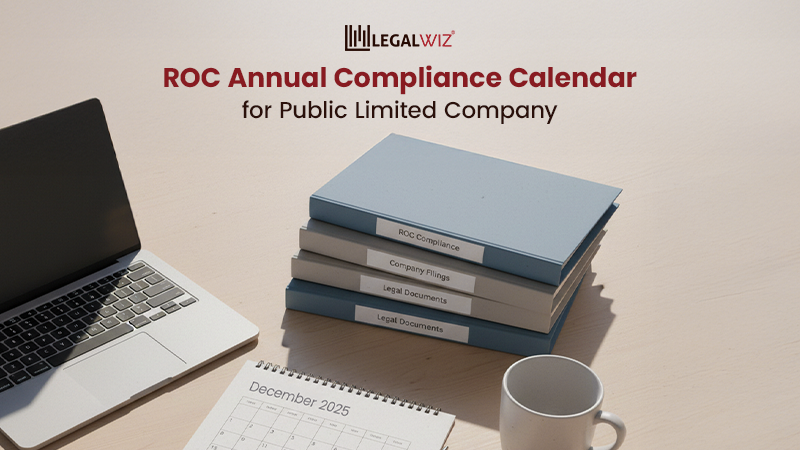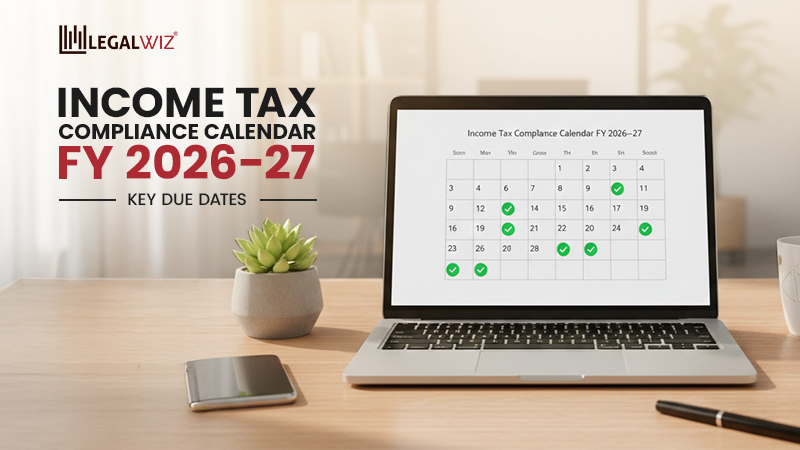MSME Form 1 Explained: Applicability, Due Date, and Filing Process
Micro, Small, and Medium Enterprises (MSMEs) are the backbone of India’s economy. They contribute nearly 30% to the GDP and over 45% to exports. Yet, many face a common challenge, delayed payments from buyers, especially large companies.
To address this, the Ministry of Corporate Affairs (MCA) introduced Form MSME-1. It is a half-yearly filing that helps track and report overdue payments to MSME suppliers.
An MCA report from 2023 revealed that payments worth over ₹10,000 crore were delayed beyond the legal credit period. This underlined the need for stronger monitoring and timely reporting.
Form MSME-1 ensures that companies disclose such pending dues and clear them without delay. In this blog, we’ll explain everything about Form MSME-1, its purpose, applicability, due dates, and filing process, so your business stays compliant and transparent.
What is Form MSME-1?
Form MSME-1 is a mandatory half-yearly return filed with the Registrar of Companies (ROC). It reports any payments to MSME suppliers that remain overdue for more than 45 days from the date the goods or services were accepted.
Only businesses that have bought products or services from MSME suppliers registered under the MSMED Act, 2006, must file this. Its goal is to assist the government in tracking the delays and ensuring that these businesses are paid on schedule.
| India’s growing network of small businesses often faces challenges in scaling operations or upgrading facilities. To bridge this gap, the government has introduced several initiatives to strengthen the MSME sector. Among them, the MSE-CDP scheme offers substantial support to micro and small enterprises by enhancing infrastructure and promoting sustainable practices. Learn more about how the MSE CDP scheme can benefit your business. |
Understanding the Legal Framework and Purpose of Form MSME-1
The MSME Development Act, 2006 (MSMED Act), was introduced to protect small businesses from delayed payments and promote fair trade practices between buyers and MSME suppliers.
Key provisions under Sections 15 and 16:
Section 15:
- Buyers must make payment on or before the agreed date.
- If no date is specified, payment must be made within 15 days from the date of acceptance or deemed acceptance
- In any case, the credit period cannot exceed 45 days from the acceptance date
Section 16:
If payment is delayed, buyers must pay compound interest at three times the RBI bank rate.
Important terms:
| Term | Meaning |
| Acceptance | The date when the buyer accepts goods or services |
| Deemed Acceptance | When the buyer does not object within the specified time |
| Appointed Date | The day after the credit period ends, or 15 days from acceptance when no credit period is fixed |
To ensure these timelines are followed, the government introduced Form MSME-1.
It helps track and report overdue payments to MSME suppliers. The purpose of this form is to:
- Identify companies delaying payments
- Keep a record of pending dues
- Encourage faster settlements
- Ease financial pressure on small enterprises
The legal authority for this filing comes from Section 405 of the Companies Act, 2013. It allows the Central Government to direct companies to share specific information or statistics. Under this power, the MCA issued the Companies (Furnishing of Information about Payment to Micro and Small Enterprise Suppliers) Order, 2019, which made Form MSME-1 mandatory.
Together, these laws ensure that larger companies remain accountable to micro and small enterprises. They promote transparency, timely payments, and healthier cash flow across the MSME sector.
Applicability of Form MSME-1
Form MSME-1 must be filed only by companies that meet certain criteria regarding their accounting and taxation.
| Category | Condition |
| Applicability | Every company registered under the Companies Act, 2013 |
| When Filing is Required | 1. The company has purchased goods or services from suppliers registered as Micro or Small Enterprises (MSEs) under the MSMED Act, 2006 2. Payment to such MSME suppliers has remained outstanding for more than 45 days from the date of acceptance or deemed acceptance 3. Payment was made after 45 days during the reporting half-year period |
| Exemption | Companies that: • Have no transactions with Micro or Small Enterprises • Have made all payments within 45 days • Deal only with Medium Enterprises |
Note: The filing requirement applies only to Micro and Small suppliers registered through Udyam Registration under the MSMED Act.
Learn about the Udyam registration benefits that help MSMEs access government schemes and financial support and improve business credibility. This registration offers access to government schemes, tax benefits, and enhanced credibility.
Understanding Supplier Classification
To determine eligibility, it helps to know the classification of MSME suppliers under the MSMED Act. Enterprises are categorized based on investment in plant and machinery or equipment and annual turnover. Both criteria must be met:
| Classification | Investment Limit | Turnover Limit |
| Micro | Up to ₹1 Crore | Up to ₹5 Crore |
| Small | Up to ₹10 Crore | Up to ₹50 Crore |
Only suppliers qualifying as micro or small enterprises are considered when reporting in Form MSME-1. To make this, as well as other reporting, more accurate and transparent, the MCA introduced its upgraded V3 portal, which brought several key changes to the filing process of MSME-1.
Shift from MCA V2 to V3: What Changed for MSME-1
With the launch of the MCA’s upgraded V3 filing portal, the reporting process for Form MSME-1 underwent a major change.
Earlier (Under MCA V2)
- Companies had to report only those MSME dues that were:
- Unpaid for more than 45 days, and
- Still outstanding at the end of the half-yea
- In short: Only overdue & pending payments were reported.
Now (Under MCA V3)
The reporting is broader and more transparent. Companies must now report every transaction with a registered MSME supplier, including:
| Payment Status | Reporting Requirement (V3) |
| Paid within 45 days | Yes |
| Paid after 45 days | Yes |
| Outstanding for less than 45 days | Yes |
| Outstanding for more than 45 days | Yes |
Bottom line: If a company has taken goods or services from an MSME, the transaction must be reported. whether payment is made, delayed, or still pending.
This helps the government closely track MSME payment behavior and encourages timely payments.
Amendment Order 2024: What Changed Further?
(Effective from 15 July 2024)
The amendment made the rules even stricter by covering all delays, even if the payment is later cleared.
| Feature | Earlier (V2 System) | After Amendment (V3 System) |
| What had to be reported? | Only dues that were pending for more than 45 days at the end of the reporting period | Any payment delayed beyond 45 days, even if it was later paid |
| If payment was cleared before filing | No need to report the transaction if the payment was settled before the filing date, even if it was delayed earlier | Still required to report if the delay crosses 45 days |
| NIL Return | Not required, because the system focused only on long-pending overdue payments | Mandatory if any delay occurred during the period |
| Data Disclosure | Very limited information was captured since only overdue outstanding amounts were reported | Detailed information, including ageing, delay period, and vendor-wise details |
| Purpose | To provide basic visibility of MSME dues, without tracking every delayed payment or the age of pending bills | Full transparency and strict monitoring of MSME payment behaviour |
What Details Do You Need to Report in the MSME-1 Form?
Companies must include full information regarding their unpaid bills to MSME suppliers when they fill out the form. The following information is needed:
- CIN, PAN, and basic company details
- Name, address, and PAN of MSME suppliers
- Total outstanding amount due for goods or services
- Date from which the payment has been pending
- Reason for the delay in payment
These details help the MCA maintain accurate records of delayed transactions and monitor payment practices across companies.
MSME-1 Due Date and the Frequency to File
You have to submit Form MSME-1 with the MCA twice a year. During the reporting period, businesses must tell MSME suppliers about any unpaid bills.
Filing schedule:
| Period for filing MSME-1 | Due Date |
| October to March | 30 April |
| April to September | 31 October |
Companies must ensure accurate reporting of any delayed or unpaid dues as on these reporting dates.
Step-by-Step Process to File Form MSME-1
Filing Form MSME-1 is simple when done through the MCA portal. Here’s a clear guide to help you complete the process smoothly:
- Log in to the MCA portal: Visit the official MCA website and log in using your valid credentials.
- Go to the e-Forms section: Navigate to the “e-Forms” tab and select MSME Form-1 from the list of available forms.
- Enter company details: Fill in the company’s CIN, PAN, and other basic information such as name, address, and email.
- Add supplier information: Enter the details of MSME suppliers, including their name, PAN, and the total outstanding amount.
- Mention payment details: Specify the date from which the payment is due and the reason for the delay.
- Attach supporting documents: Upload any required attachments, such as invoices or statements related to the delayed payments.
- Provide a declaration and sign: Complete the declaration section, then digitally sign the form using the company’s authorized signatory details.
- Submit the form: Review all entries carefully and submit the form online through the MCA portal.
If you want a hassle-free filing experience, LegalWiz.in can help you prepare and file Form MSME-1 accurately before the due date.
Penalty for Non-Compliance of MSME-1
Penalties under Section 405(4) of the Companies Act, 2013:
| Non-Compliance | Penalty | Notes |
| Failure to file Form MSME-1 by the due date | ₹20,000 | Applies to the company and every officer in default |
| Continuing failure after the initial penalty | ₹1,000 per day | Maximum penalty capped at ₹3,00,000 |
Filing the return on time helps avoid fines and ensures the company maintains a good compliance record and credibility.
Final Thoughts: File MSME-1 On Time, Stay Compliant
Filing Form MSME-1 is not only required by law, but it also shows that a firm is dedicated to being open and honest in its dealings. Companies that complete MSME/Udyam registration and follow the rules regularly build confidence with MSME suppliers and enhance their credibility.
The government may also use the information from this form to keep an eye on late payments and make sure that MSMEs get their payments on time. Stay stress-free and compliant. Before the deadline, send your MSME-1 return to LegalWiz.in.
Frequently Asked Questions
Who is required to file MSME-1?
Every company that has received goods or services from an MSME and has outstanding dues for more than 45 days must file MSME-1 with the ROC. The purpose of MSME-1 is to track companies delaying payments to MSME suppliers and ensure the timely clearance of their dues.
Is Nil return still allowed under the new version of MSME-1?
With the amendment effective from 15 July 2024, even if there are no outstanding amounts at the end of the half year, a company must still file Form MSME-1 if, during that time, there was a payment breach (i.e., a payment delayed beyond 45 days).
Do you need to report all supplier invoices or only those exceeding 45 days?
If there is at least one delayed payment (beyond 45 days) in the half year, all relevant invoices (whether paid late or otherwise) must be included in the return.
Can a company revise MSME-1 after submission?
No. Once MSME-1 is submitted, it cannot be revised. Accuracy should be ensured before submitting. (This is a common understanding from multiple compliance sources.)
Are there cases of large penalties imposed for not filing MSME-1?
Yes. In one recent MCA order, both the company and its directors were penalized ₹2,85,000 each for the delayed filing of MSME-1.

Sapna Mane
Sapna Mane is a skilled content writer at LegalWiz.in with years of cross-industry experience and a flair for turning legal, tax, and compliance chaos into clear, scroll-stopping content. She makes sense of India’s ever-changing rules—so you don’t have to Google everything twice.







